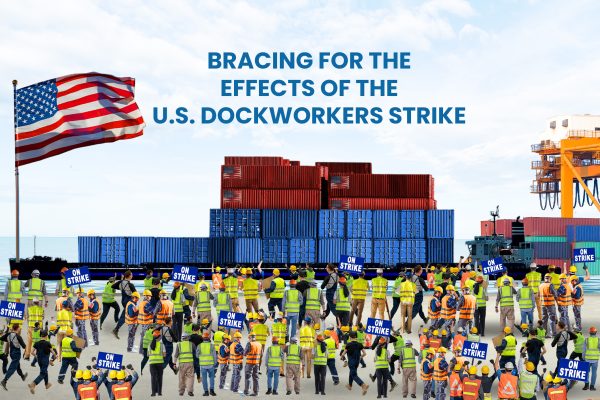Ports on the East and Gulf Coasts of the United States are set to close this week, with the union representing tens of thousands of dockworkers and an industry group representing port operators and shipping companies at loggerheads over a new labour contract.
A total of 14 ports – from Maine to Texas – involving some 25,000 workers could be affected by the strike, according to the United States Maritime Alliance (USMX).
The International Longshoremen’s Association (ILA) is demanding sizable wage hikes and a complete ban on the use of automated cranes, gates and container-moving trucks in unloading or loading freight at ports handling about half of the country’s ship cargo.
How will this affect Australian Shippers?
In the short term, those most affected will be traders who have either import or export transactions with the East Coast USA. As well as FCL traffic, the strike will have an impact on empty containers, which will not be in the right spot when needed.
If the strike continues, it would impose a fresh barrier to cargo during the run-up to the all-important Christmas peak season. The industry has been embroiled in a series of shocks in recent months. Over in the US, this includes delays at the Panama Canal which, suffering from a local drought, has limited traffic through the vital waterway. On a global level this has been compounded by the Houthi rebel attacks on ships trying to navigate the Suez Canal.
In the longer term, a prolonged US port strike will cause widespread disruptions around the world. The ripple effect is potentially massive, with vessels and equipment grinding to a halt. If ships and containers aren’t moving in the US, eventually it must clog up the global supply chain. Disruption is already happening – with shippers bracing for extra airfreight costs.
What are the alternatives?
For urgent shipments, airfreight is the obvious solution. Even before the strike started, the mere threat of disruption had an impact on the airfreight market, as some shippers panicked and converted shipments from sea to airfreight.
This might speed up transit of time-sensitive cargo, but it also adds greatly to the cost.
If you have imports coming in from the US, don’t instruct your supplier to switch from sea to air without talking to us first.
There are options such as using a slower airfreight service with reduced rates. An example of this is having goods sent from East Coast to West Coast USA by road or rail, then loaded on a freighter plane to East Coast Australia.
So if you are worried about keeping your freight moving – whether to and from the USA or any point around the globe – the first step is to contact us here at Colless Young.
For correct, professional advice on your shipping needs at any time, contact Andrew at Colless Young, email enq@collessyoung.com.au Tel: +61 7 3890 0800.

